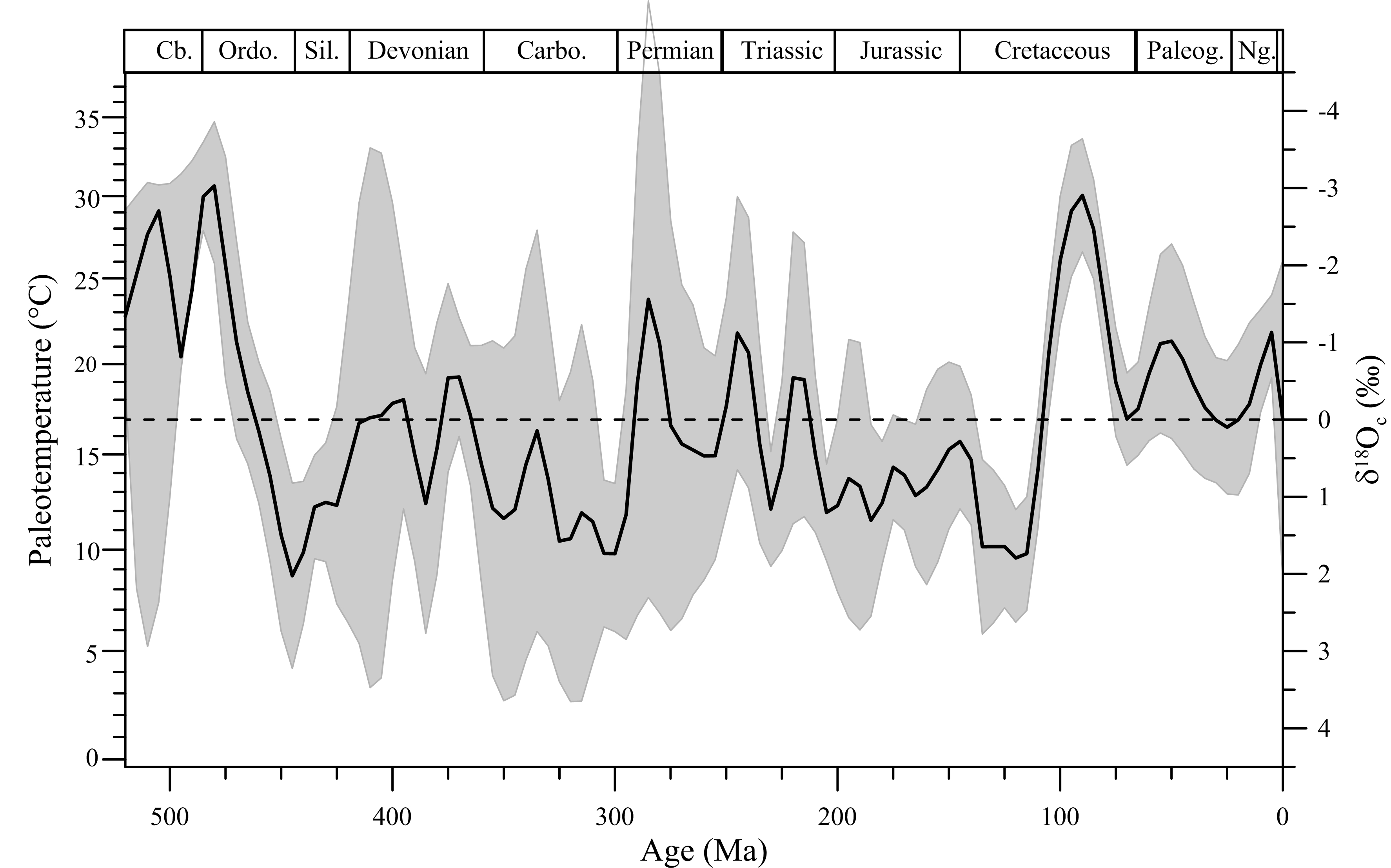On plate tectonics and ocean temperatures

Plate tectonics, the principal vehicle for dissipation of planetary energy, is believed to buffer the δ18O of seawater at its near-modern value of 0‰ SMOW (Standard Mean Ocean Water) because the hot and cold cells of hydrothermal circulation at oceanic ridges cancel each other. The persistence of plate tectonics over eons apparently favors attribution of the welldocumented oxygen isotope secular trends for carbonates (cherts, phosphates) to progressively warmer oceans, from 40–70 °C in the early Paleozoic to 60–100 °C in the Archean. We argue that these oceanic hydrothermal systems are dominated by low-temperature (below 350 °C) cells that deplete the percolating water in 18O. Seawater δ18O is therefore a proxy for, rather than being buffered by, the intensity of plate tectonics. Detrending the Phanerozoic carbonate δ18Oc secular trend for its “tectonic” component yields a stationary time series that, interpreted as a proxy for Phanerozoic climate, indicates low-latitude shallow ocean temperatures oscillating between 10 and 30 °C around a baseline of 17 °C, attributes comparable to modern temperature values